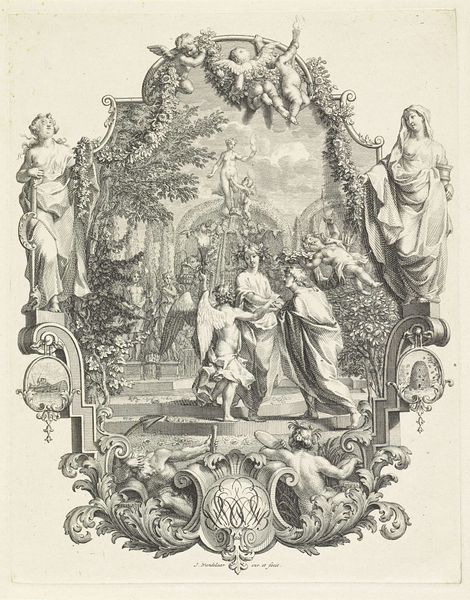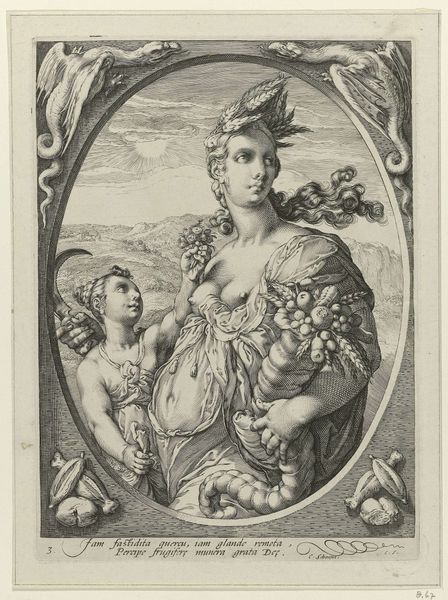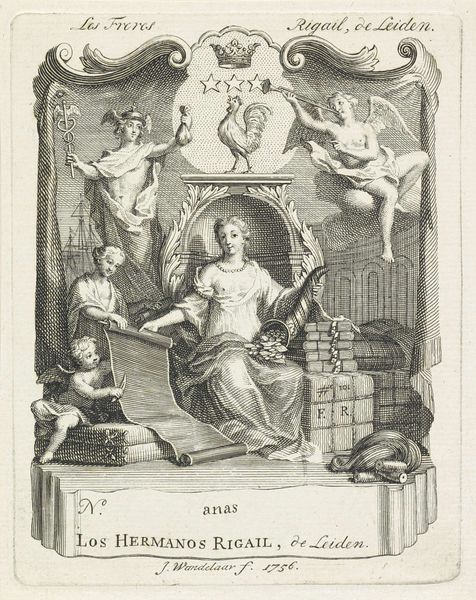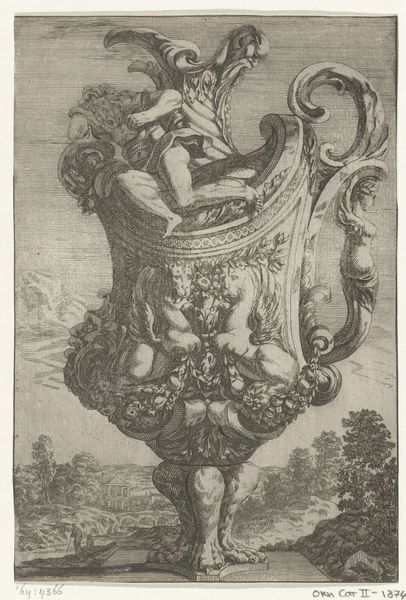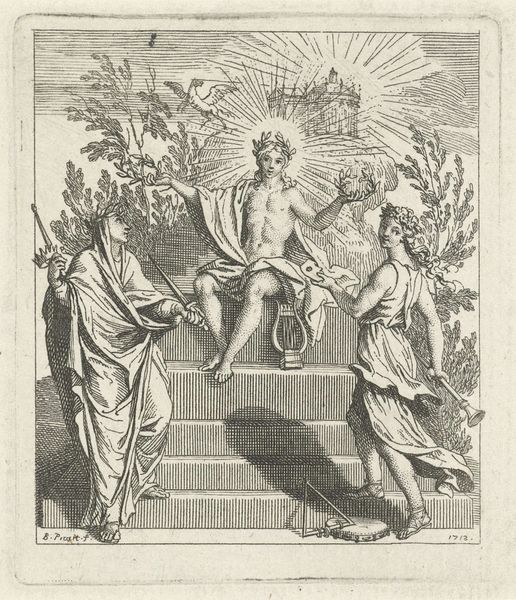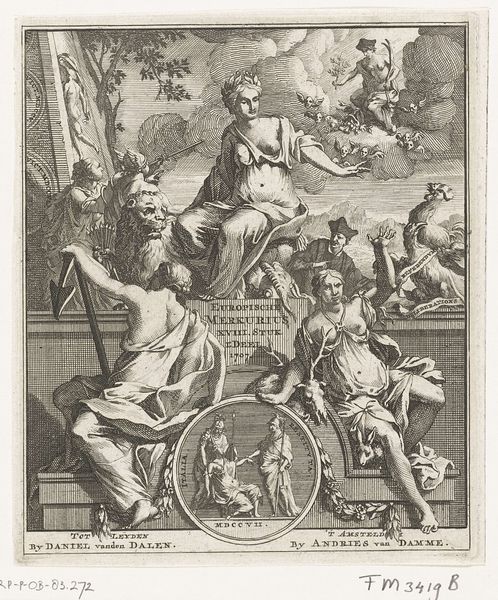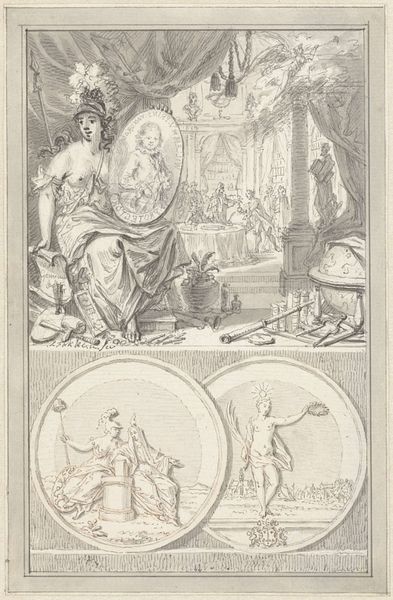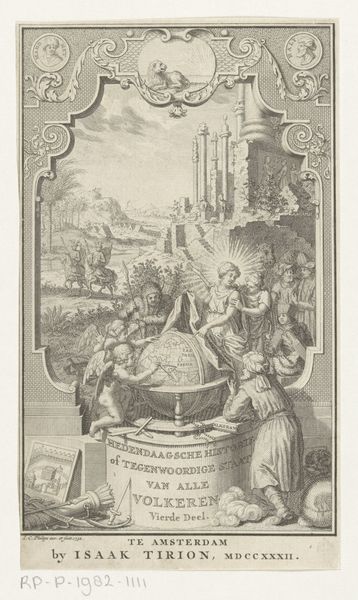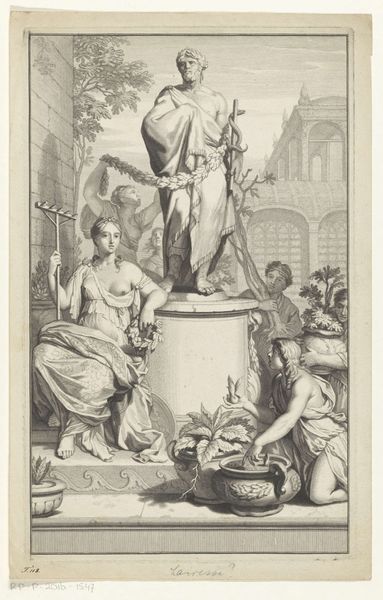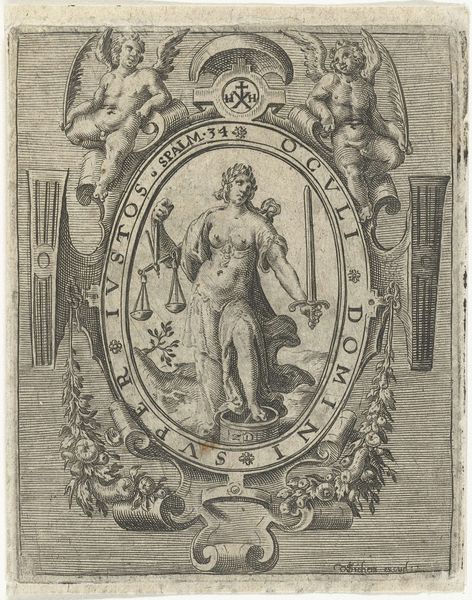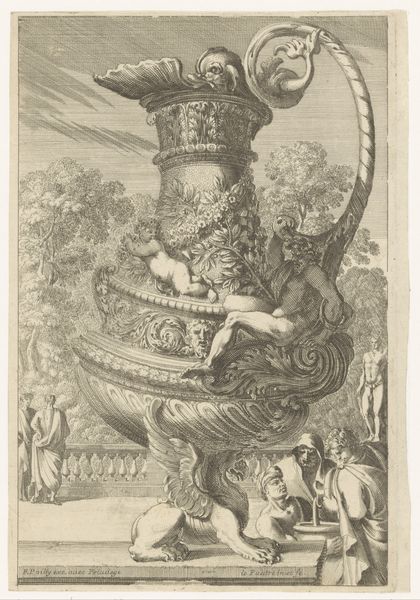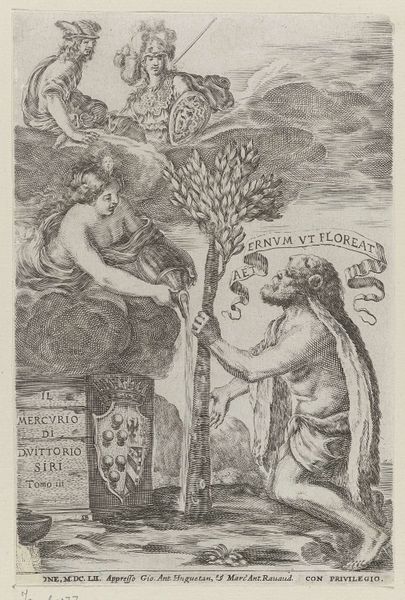
print, engraving
#
allegory
#
baroque
#
pen drawing
# print
#
old engraving style
#
history-painting
#
engraving
Dimensions: width 105 mm, height 178 mm
Copyright: Rijks Museum: Open Domain
Editor: So, this is "Waarheid toont een schrijfster de geboorte van Venus," from 1688, an engraving by Gilliam van der Gouwen. It's incredibly detailed for such a small print, but there's a lot going on, a little chaotic. I am intrigued by the contrasting symbolism and how it all fits together. What's your take? Curator: Chaotic, yes, but deliciously so! It's like peeking into someone's wonderfully cluttered mind. Consider the period – the late 17th century. These allegorical scenes were catnip for the educated elite. It wasn't just art; it was a puzzle, a conversation starter. Look at the woman writing. Who do you think she is, bathed in the light of truth? Editor: Well, given the title, I'd assume she's the "schrijfster" – a writer? Is she supposed to be a specific historical figure, perhaps? Curator: Precisely! This writer, perhaps a muse herself, witnesses Venus's birth reflected in the mirror, symbolizing inspiration drawn from mythology and classical knowledge. It also refers to a transition from pure fantasy, shown within the mirror, towards a structured reality, illustrated by the woman writer in the left bottom corner. Consider how truth literally unveils the mythology and what message that makes you reflect upon? Editor: So it's not just about beauty, but about intellectual pursuit and using mythology as a lens? Almost like saying, "even art needs truth"? Curator: Exactly! This work whispers to us across centuries. Beauty inspires intellect. Truth, born from that intersection, can produce powerful revelations in ourselves. Editor: That reframes the entire piece for me! I saw chaos, now I see a layered argument for intellectual enlightenment, how about that. Curator: And that's the magic of art, isn't it? It holds up a mirror, not just to the world, but to our own evolving understanding. A single piece sparks many stories to tell!
Comments
No comments
Be the first to comment and join the conversation on the ultimate creative platform.
